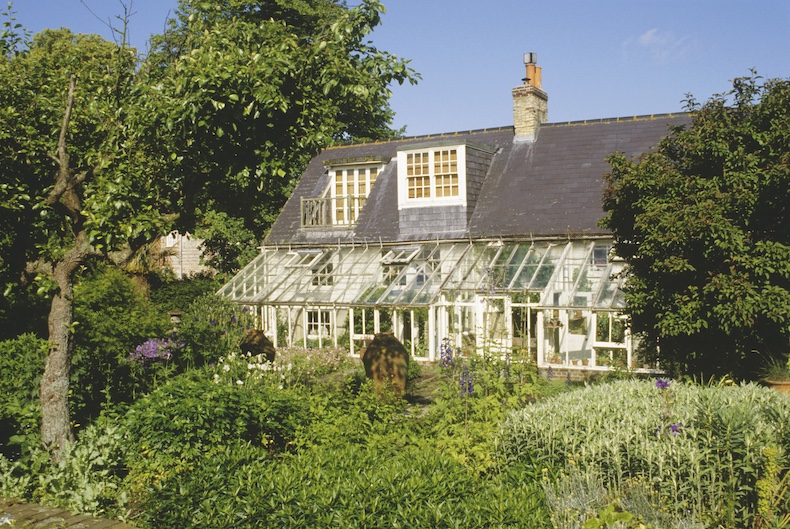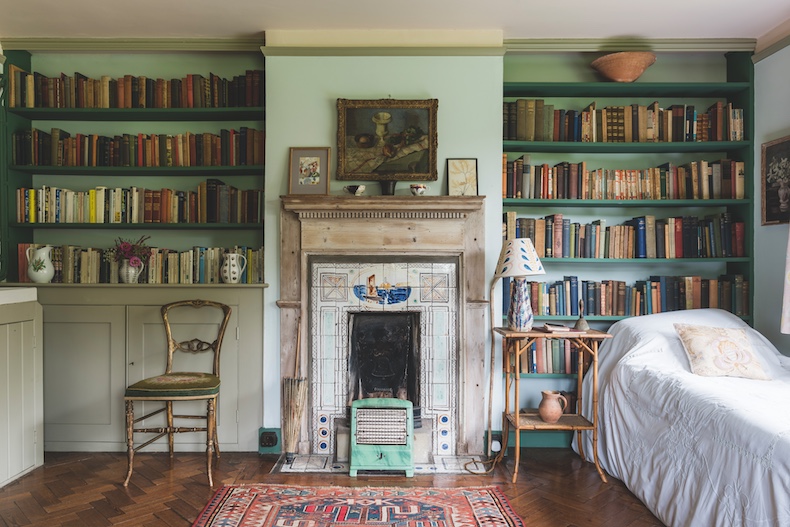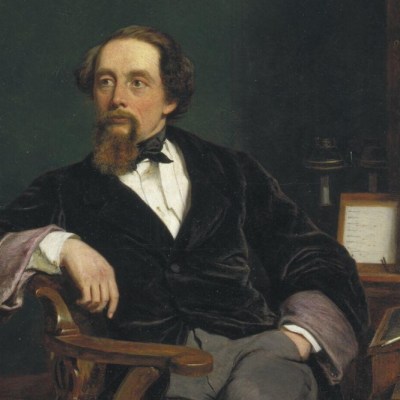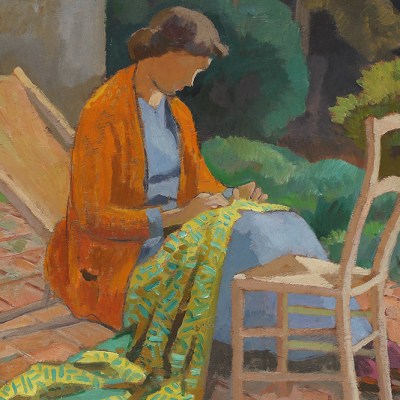From the May 2025 issue of Apollo. Preview and subscribe here.
When Virginia Woolf first considered turning a simple 17th-century weatherboard house in the quiet village of Rodmell, East Sussex, into her country retreat from Bloomsbury, she wrote to a friend that it would become the ‘pride of our hearts’. That was in 1919. By 1930, her vision seemed fulfilled. ‘How happy I am,’ she wrote, ‘how calm, for the moment how sweet life is with L [Leonard, her husband] here, in its regularity & order, & the garden & the room at night & music & my walks & writing easily & interestedly’. The Woolfs already had a strong connection to Sussex and, for Leonard, part of the attraction of Monk’s House was the feeling of ‘a quiet continuity of people living […] one was absorbed into this procession of men, women and children’ through the centuries.
In this bucolic setting, Woolf worked on one of her most quintessentially ‘London’ novels, Mrs Dalloway, which was published 100 years ago this month. The novel, initially titled The Hours, takes place on a single day in June. When I visit Monk’s House, it is spring and birdsong weaves through a clear blue day. A poppy flares out of the long grass and there are primroses and bluebells pushing up through gaps in the brick paths. The cottage garden, held in a snug patchwork between low flint walls, already hints at the abundant cherry blossoms and produce that Virginia and Leonard both celebrated. But it was not always springtime at Monk’s House; when the Woolfs purchased it, there was no mains water or electricity and the occasional floods and mice scuttling across the beds sapped some of their enthusiasm. They warned visitors such as T.S. Eliot and Vita Sackville-West about the rudimentary conditions, though this didn’t stop either of them from returning to stay many times over the years.
View of the south side of Monk’s House, East Sussex, which Virginia and Leonard Woolf bought in 1919. Photo: © National Trust Images/Eric Crichton (https://www.nationaltrust.org.uk)

‘All one’s life is a struggle for freedom,’ Woolf noted in her diary, confessing her delight in the installation of a new stove at Monk’s House and the independence it brought. Woolf felt a sense of possibility as soon as she opened her garden gate into the meadows, too, often walking for miles across the South Downs, where she found ‘space to spread my mind out in’. From the opening of Mrs Dalloway, as her protagonist, Clarissa, sets off across London in pursuit of flowers for her party, the narrative exudes the author’s own pleasure in wandering the city’s streets. For Woolf, it was like stepping out on a ‘magic carpet’.
The growing financial success of Woolf’s novels bought her privacy, solitude and house improvements (Mrs Dalloway funded the bathrooms). But servants – the Woolfs employed a cook and a housekeeper – made life more comfortable and gave her freedom to write. These servants also witnessed the eccentricities of Woolf’s daily routines. In the kitchen hangs a painting of Louie Everest, a young woman who worked for the Woolfs from 1934 until Leonard’s death in 1969. She recalled her first day when, from the kitchen beneath, she heard Virginia in the bath: ‘I could hear her talking to herself. On and on she went, talk, talk, talk, asking questions and giving herself the answers. I thought there must be two or three people up there with her.’ Leonard explained that his wife would recite what she had written the previous night – the bath was ‘a good, resonant place’ to test things out.
At Monk’s House, Woolf developed a daily routine in which she would cross the garden to her writing lodge near the orchard, with the steeple and weathervane of the church rising behind it, settle into a low chair with her writing board across her lap and write until lunchtime. Today, visitors peer over a rope cordon into the lodge, built near the boundary of the garden in 1934 to replace a converted toolshed. We see Woolf’s desk and typewriter and, in the corner, the empty chair where she wrote. The writing room of a revered literary figure is almost always presented as a hallowed space, and it exerts a magnetic if uneasy pull. Woolf typically shed her creative detritus around her as she worked – pen nibs, cigarette butts, crumpled paper with discarded drafts – but today the National Trust maintains a clean and tidy lodge. Admittedly, it is difficult to recreate a deceased writer’s room without it feeling a little like a stage set or, worse, a mausoleum. But there is perhaps more of a sense of living connection to be found by looking up into the branches of the mature chestnut tree that arches over the roof of the lodge. It would have witnessed the writer’s solitary struggles and epiphanies, as well as dappling Bloomsbury group gatherings in its shade. Photographs show Woolf with her friends and family on summer days, settled in deckchairs on the terrace outside. From here they would have had full view of the South Downs, which wrap like a curved arm around the house and garden.
Virginia Woolf in the garden of Monk’s House in Rodmell, East Sussex, photographed in 1926. Photo: Mondadori via Getty Images

Sometimes Woolf wrote from her bedroom, light pouring in from the garden windows. Painted a pale green as if to match the verdant glow from outside, it was built as an extension to the house and accessible only from the garden. There is a pleasing synchronicity to the creation of this secluded room: in 1929, the year it was built, Woolf published A Room of One’s Own. At Monk’s House she achieved the independence for which she advocated in that essay: ‘A woman must have money and a room of her own if she is to write fiction.’ And to fill that room? A rather narrow single bed; a bookcase with her Arden editions of Shakespeare, each bearing a carefully handwritten label and cover (she found bookbinding therapeutic). And there, the fireplace with tiles painted by her sister, Vanessa Bell, featuring an image of the lighthouse seen from Talland House in Cornwall – the sisters’ childhood summer home and part of the inspiration for To the Lighthouse (1927). Woolf did not exist in a state of solitude, even if she sometimes expressed a wish to; her friends surrounded her on the walls and on the page. A still life by Bell hangs above the fireplace and there are flower paintings by Angelica Bell (Woolf’s niece), as well as a view down the garden path by her friend Duncan Grant. If one pauses in the doorway, where the garden seems to flow into the room, the hard-won tranquillity she experienced at Monk’s House sinks in – ‘how happy’, that phrase again scratched into her diary, to ‘sit alone, & go to bed in my airy room, where the rising sun on the apples & asparagus wakes me, if I leave the curtain open’.
Woolf struggled and strained with Mrs Dalloway, declaring it ‘all agony but the end’, and yet she was captivated by what it might become. ‘I dig out beautiful caves behind my characters,’ she wrote in 1923. Her diaries reveal how the characters inhabited her, following her from London to Rodmell. On 2 August 1924, she scribbled a short entry before dinner. The ‘feeling of depression’ she felt bearing down on her was due, she thought, to the ‘change from London and incessant occupation’, and to having written the death of Septimus Smith, the traumatised war veteran whose story is interwoven with that of Clarissa. ‘A change of house makes me oscillate for days,’ Woolf lamented, but perhaps distance from the city enabled her to recall and conjure its sensory detail more vividly. Or was the gentle dependability of her life at Monk’s House at the root of her creative fecundity? Reread Mrs Dalloway and you’ll also witness the sensitivity of her observations of nature; her almost hallucinatory close-ups on a flower or tree, which feel rooted in those long mornings at Monk’s House, writing at the threshold of her garden. For Septimus, and surely for Woolf, ‘to watch a leaf quivering in the rush of air was an exquisite joy’.
Virginia Woolf’s bedroom at Monk’s House, East Sussex, with fireplace tiles and a still life both painted by her sister, Vanessa Bell. Photo: © National Trust Images/Andreas von Einsiedel (https://nationaltrust.org.uk)

From the May 2025 issue of Apollo. Preview and subscribe here.


